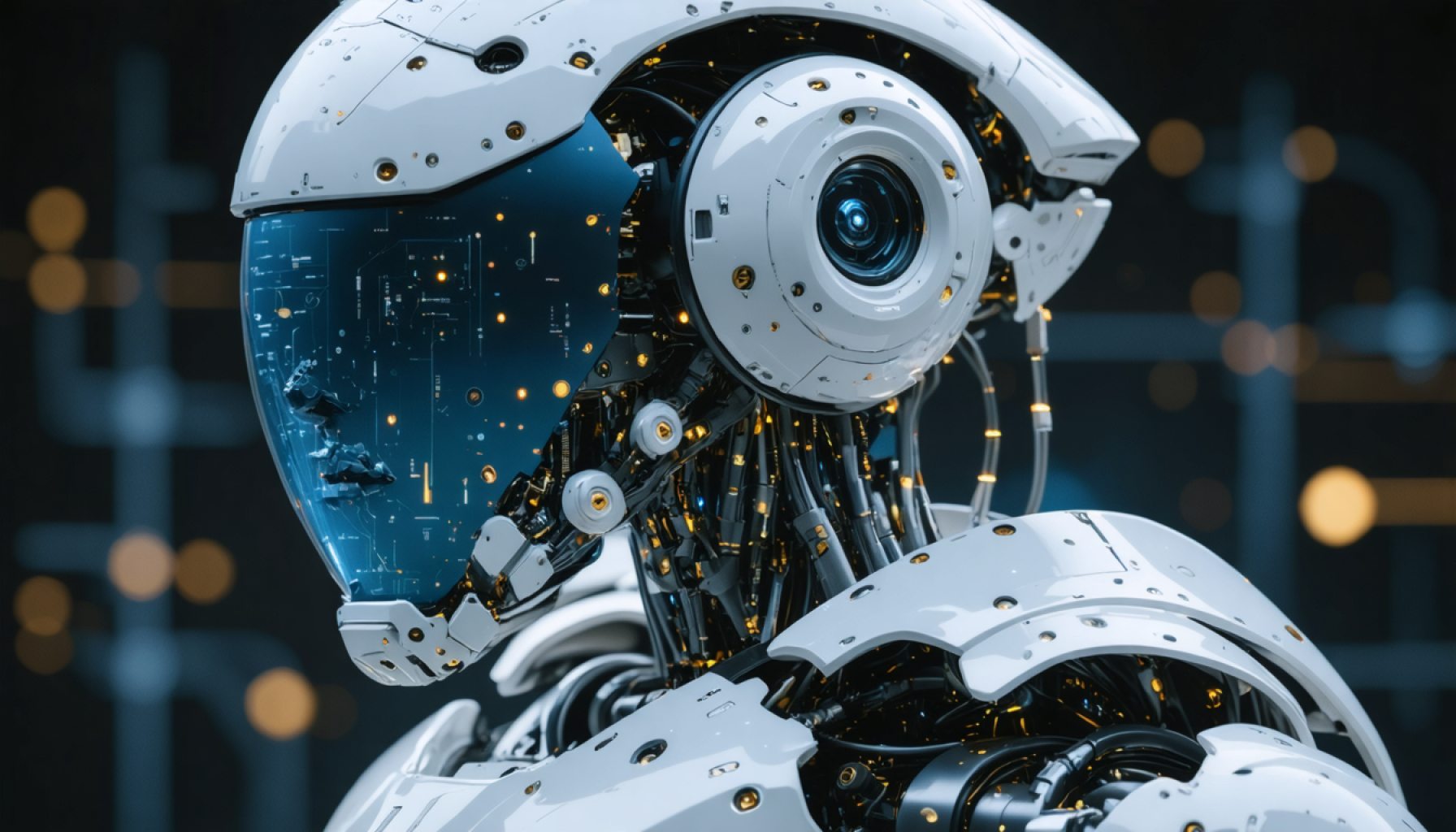- AI robotics are advancing rapidly, promising to ease and transform human tasks across various industries.
- New robotics innovations show potential for seamless human-machine integration, enhancing productivity and creativity.
- In healthcare, AI-powered robots enable surgeons to perform complex procedures with exceptional precision, reducing human error.
- Drones equipped with AI are optimizing agriculture by surveying crops, detecting pests, and predicting yields.
- The rise of AI robotics focuses on collaboration with humans, combining emotional intelligence and ethics with machine precision.
- Ethical considerations remain crucial to ensure technology aligns with human values rather than overriding them.
- The future lies in a balanced symbiotic relationship between humans and robots, enhancing capabilities rather than replacing them.
Under the watchful eyes of cutting-edge innovation, a quiet revolution emerges in the realm of AI robotics. In bustling tech hubs around the globe, roboticists craft machines with the dexterity and intelligence that once lived only in the imaginations of sci-fi writers. These creations promise not just to ease the human burden but to transform it.
Picture a robotic arm as it deftly assembles intricate parts on a factory line, tirelessly working alongside human counterparts without breaking a sweat—or an internal circuit. The delicate dance of steel and silicon hints at a future where machines integrate seamlessly into our lives, enhancing productivity and sparking creativity.
In healthcare, AI-powered robots are positioned to revolutionize surgery. Equipped with precision-guided instruments, these robots assist surgeons in performing complex procedures with unparalleled accuracy. The once daunting prospect of human error is now mitigated by algorithms as precise as a mathematician’s dreams.
Beyond industry and medicine, AI robotics takes flight. Think of drones soaring over vast agricultural lands, surveying crops with eyes as sharp as hawks’. These aerial assistants gather data, detect pests, and predict yields, optimizing farming and securing food supplies for the teeming masses.
Yet, amid these technological strides, the core narrative is about more than mechanics—it’s about redefining what is possible. As we entrust machines with increasing responsibility, ethical considerations emerge. Ensuring the technology aligns with human values and aids, rather than overrides, our decision-making remains crucial.
Ultimately, the rise of AI robotics is not about replacement but collaboration. In this symbiotic relationship, humans provide the creativity and emotional intelligence, while machines offer precision and endurance. The takeaway? Humanity’s future isn’t about eclipsing human capabilities but enhancing them, creating a harmonious blend of flesh and circuit.
As we stand on the brink of this transformative era, the lesson is clear: embrace the robotic revolution with an eye for innovation balanced by ethical responsibility. Together, humans and robots might just orchestrate a future as spectacular as any science fiction has promised.
How AI Robotics is Shaping Our Future: Surprising Facts You Need to Know
How AI Robotics is Enhancing Multiple Sectors
1. Industry Transformation:
Robots equipped with artificial intelligence are revolutionizing various industries by performing tasks that require high precision and consistency. According to a report by the International Federation of Robotics, the use of industrial robots is expected to grow by 12% annually, due to their ability to increase productivity and lower costs.
2. Advancements in Healthcare:
AI robotics in healthcare go beyond surgical assistance. They are being developed for patient monitoring, rehabilitation, and even elderly care. Emerging technologies include robotic exoskeletons that assist patients in regaining mobility and AI-powered diagnostic tools that provide early predictions of diseases. A 2020 study in the journal Nature Medicine demonstrated AI’s potential in accurately diagnosing skin cancers, functioning comparably to dermatologists.
3. Agriculture and Food Security:
AI robotics in agriculture improve efficiency by automating labor-intensive tasks. These robots can monitor plant health, control pests, and optimize irrigation, leading to more sustainable farming practices. Research by AgFunder shows AI in agriculture could save billions globally by reducing water usage and increasing crop yields.
4. Ethical and Social Considerations:
The integration of AI robotics raises ethical issues such as job displacement and data privacy. The World Economic Forum highlights the need for policies that ensure AI advancements do not exacerbate inequality. Developing transparent AI systems that prioritize user consent and ethical compliance is a primary concern.
How to Incorporate AI Robotics Into Your World
How-To Steps & Tips:
– Identify Suitable Applications: Identify repetitive tasks in your industry that could be automated to improve efficiency.
– Consult Experts: Work with AI specialists to assess feasibility and incorporate robotics technology safely.
– Ongoing Education: Attend seminars or courses on AI to stay updated on latest trends and technologies.
Market Forecast & Industry Trends:
The AI robotics market is projected to exceed $50 billion by 2030, driven by demand in automation, healthcare, and defense sectors. North America currently leads in AI robot adoption, but Asia-Pacific is fast closing the gap due to significant investments in industry automation.
Pros & Cons Overview:
– Pros: Increased efficiency, precision, reduction of human error, enhanced creativity through collaboration.
– Cons: Potential job losses, high initial costs, ethical concerns on privacy and consent.
Recommendations:
– Invest in Training: Encourage workforce adaptation through reskilling initiatives.
– Monitor Advancement: Stay informed of AI developments to leverage new opportunities.
– Adopt Ethically: Foster partnerships that promote the ethical use of AI robotics, ensuring human oversight and transparency.
By embracing AI robotics balanced with ethical priority, individuals and companies can harness the technology’s full potential responsibly and sustainably.
For more information on tech and innovation, visit the World Economic Forum, and for updates on AI advancements, explore resources from Nature.
